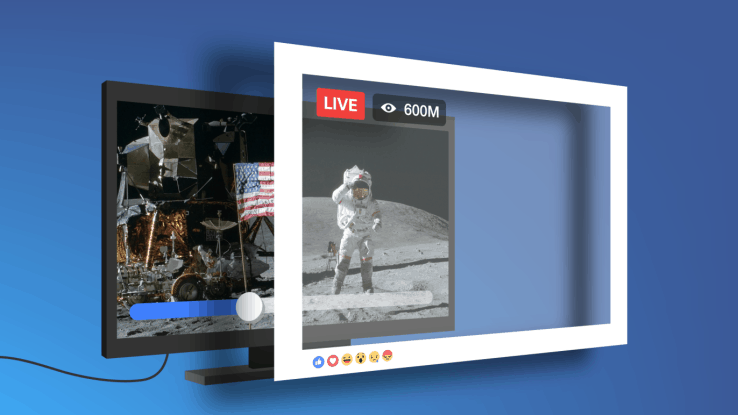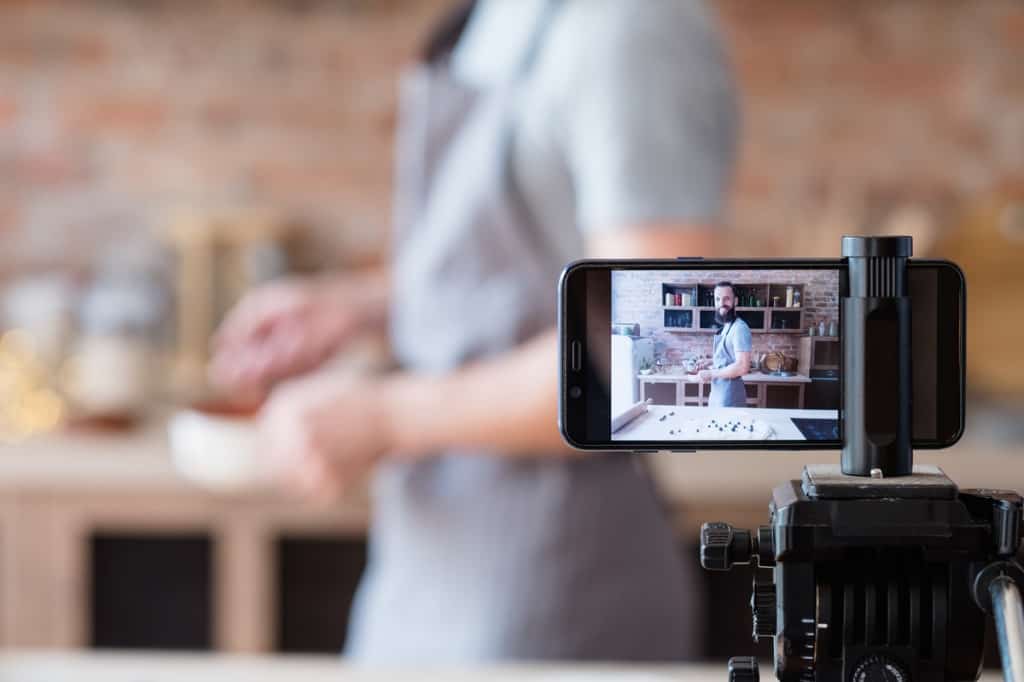
Video is an excellent means of bringing something of a personal touch to communicate with customers and prospects in the current situation.

Why video is in demand now
Due to the cancellation of numerous trade fairs and customer events, personal contact is currently no longer available. To maintain customer relationships in the current situation, you have to communicate effectively and efficiently at the same time.
In addition to creating blog posts and editorial work, successful content strategies focus, among other things, on emotional communication in the form of videos. After all, how can you build trust better than speaking directly and personally to your customers?
It has also been proven that people remember the picture and moving picture content longer than plain text. Of course, this does not mean that your content must only consist of videos. However, it could be a perfect addition to market your content, and your readers will get a good impression of you and establish a personal connection to you and your other content.
In short: Videos make their content human and personal. You can use this opportunity to gain the trust of your customers.
Specific examples and ideas
What videos can you now create from your home office? Here are some patterns and designs:
Score with personality
A video allows you to score with personality without putting people at risk through direct contact. Create a short video in which you introduce yourself and your company. Explain to your viewers what makes your product or service so unique and why you can rely on your team even in times of crisis. Let your employees also have their say.
Demonstrate product
With videos, you can present your product quickly and understandably. You may also be able to film it from home and explain the functionality. Your customers will be grateful if they can watch a short tutorial in video format instead of a written instruction or if they see your product in action. It is, of course, also important what distinguishes your offer from others and what makes it unique.
Let customers have their say.
Instead of putting yourself in front of the camera, you can ask your customers or influencers to talk about you or your company because the significant advantage of video is the spreading of emotions. If your customers tell you how satisfied they are with their product or service, it will increase their credibility enormously. If they then share the videos on their network, this also gives increased attention.
Internal videos
In the current situation, companies can also save time and money with videos for internal communication. Since there is no need for personal meetings, updates, onboarding processes, or briefings can be communicated via video. This not only saves time for the creation of a circular email, but complex content can also be transmitted efficiently and sustainably.
Scope and platforms

No general statements can be made about the perfect length of videos. It depends very much on the target group, the topic, and the platform chosen.
For example, you currently score on YouTube with detailed videos. This applies not least to advise and explanatory videos. In all of this, YouTube is ideal for content that should be found in the long term, because many people use the platform like a visual search engine.
Instagram, on the other hand, is designed for short videos. With the built-in video platform IGTV, it can be longer than a few seconds or minutes. Nevertheless, videos that are intended for the moment and where it is not essential that they find new viewers in a few weeks or months are better served here.
Other social networks, such as Facebook or Twitter are designed for short video formats. On Facebook, you will also find the stories format known from Instagram.
From theory to practice
With all of this, you don’t necessarily need a film team to create good video content. Because employees already have the essential video creation tool in their pocket: the smartphone. Many current devices have a camera with a 4K resolution that can deliver excellent quality.
When filming with your smartphone, you only have to pay attention to a few rules:
Choose the right camera.
One of the advantages of shooting videos with a smartphone is that there is a camera at the front and rear. The front camera is mostly used for short selfie shots such as Instagram stories. You always have an eye on how you are in the picture. These cameras have recently increased in quality because they are no longer only used for video calls. For more professional videos, however, it is usually recommended to switch to the camera on the back of the housing, which generally still offers more here.
The right position
The camera should be at eye level. So don’t film yourself from below or above, but like a (virtual) conversation partner.
Pay attention to your position in the picture frame. Most of the time, it makes sense to be central or, for horizontal videos, also to the left or right. In the middle, however, you don’t do anything wrong.
Your eyes should be approximately at the level of an imaginary line that is a third below the top edge (rule of thirds).
If you only see your head, you are too close to the camera. On the other hand, if you see your stomach or even your legs, you are (far) too far away.
Record these videos while standing, because they automatically make you more dynamic than when sitting.
But how do you take care of yourself in the home office without helpers? For this, it is recommended to purchase a smartphone tripod or a corresponding adapter for a tripod that may already be present. This way, you can guarantee that your video is not blurred and that you have the necessary freedom of movement.
Lighting conditions
Another essential step for successful shots is the right lighting conditions. Because even the best smartphone cameras still have a weakness here compared to professional video cameras.
Therefore, ideally, you should look for a significant light source, for example, a window. In front of the window, the motto is: avoid backlighting! That means: The best pictures are taken when they have the window in front of them. However, if it is behind you, you only see a ghostly silhouette.
If there is not enough daylight available, you can also use artificial light from a lamp. This lamp should be slightly ahead of you. Do not use a lamp that shines directly on you from above or below because the unsightly shadow casts on your face.
By the way, professionals work with two to three lamps. One is the leading light from the front. Another is on the other side and a little further away (or dimmed): This softens shadows. And in the studio situation, a third lamp comes from behind and above to illuminate the back of the head, because this gives the person a subtle contour and stands out from the background. When shooting outdoors, however, natural light and a reflector are often used.
You don’t have to go that far. But if you have two light sources, you can experiment with a similar setup.
Background
Find the most straightforward possible background that is not too distracting. A bit of atmosphere is allowed. Bookshelves are always accessible.
Otherwise, a neutral white wall is also the right choice. Do not stand directly in front of it, but leave some distance: Otherwise, you may cast a shadow on the wall or look more like you are standing up for a police photo …
Sound quality
Your smartphone has not only an excellent camera to offer but also a microphone. To be understood at the end of the video, make sure that you do not accidentally cover it with your hands if the smartphone is not on a tripod.
Important to know: The sound quality depends heavily on the room. Bare walls reflect the sound, which leads to echo. You can quickly check this by clapping your hands in different places: It will sound very different in the bathroom than in the living room—basic rule: the less echo, the better for speech. Carpets, curtains, shelves, upholstered furniture, etc. swallow or scatter the sound.
If you are too quiet in the video, you may need to get used to speaking louder and more precise. It shouldn’t sound like theater. But who else has a quiet voice should dare a little more here? Also, the following applies: the camera loses some of a person’s dynamics. So you always have to exaggerate a bit to look natural afterward and not sleepy.
There are also simple clip-on microphones that can be connected to a smartphone. They can significantly improve the sound quality.
Final word
With these tips and a few good ideas, you can create excellent videos with limited resources and from your home office. They won’t achieve professional studio quality, but at the moment, viewers will be happy to forgive you. In this respect: Don’t put yourself under too much pressure. Formats like the Instagram Stories are ideal for experimenting, as the content disappears on its own. Test all of this in a very playful way, without wanting to publish the videos because more self-confidence in front of the camera comes with more experience!
